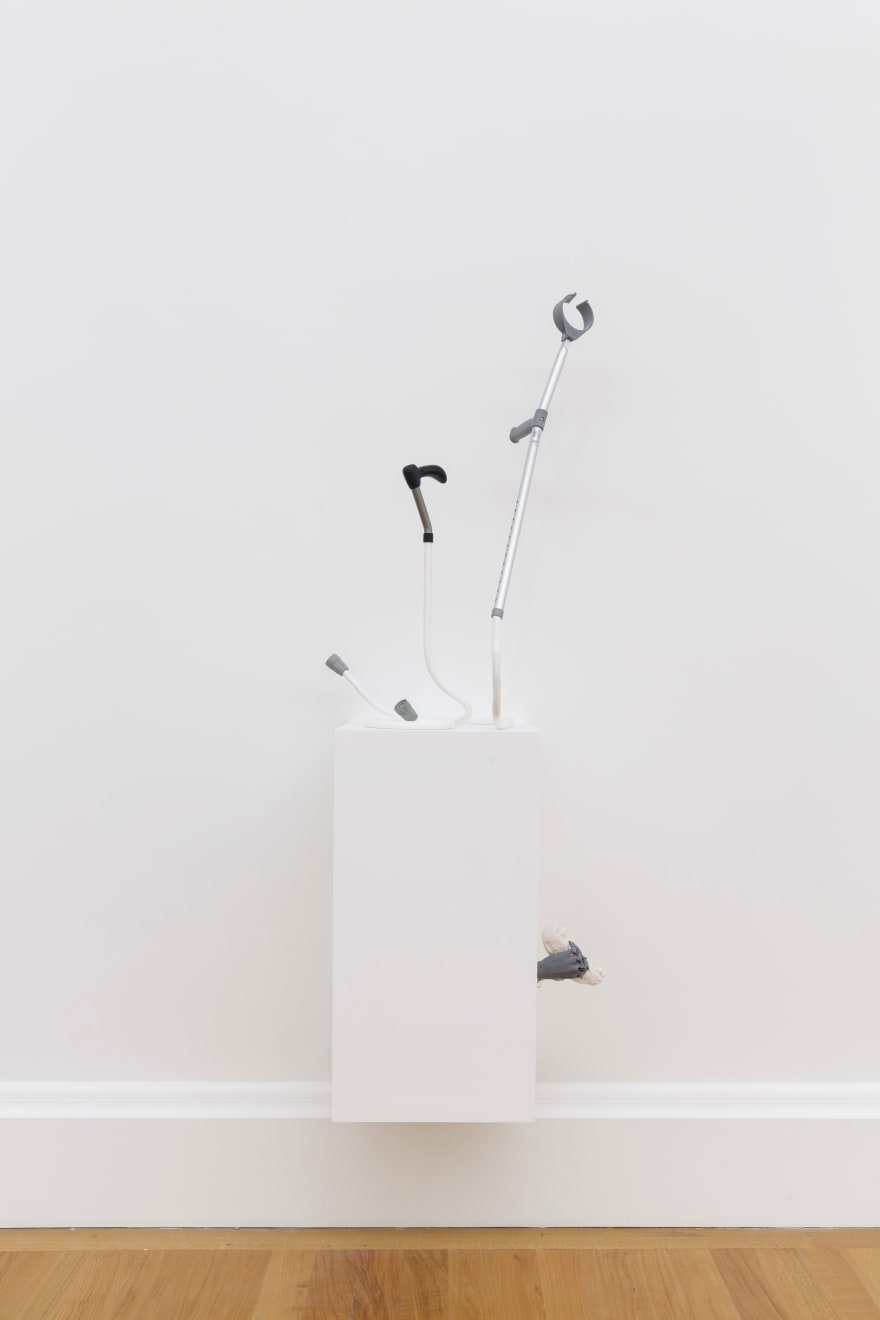Jesse Darling
Brazen Serpent 2, Bowl of Hygieia , 2018
Two sculptures: both Steel, aluminium mobility cane,
rubber ferrule, lacquer, white plinth with hand
rubber ferrule, lacquer, white plinth with hand
Dimensions Variable
Further images
Darling populates the space with works made from everyday objects and materials. These take on the appearance of both wounded and liberated shapes. Contorted mobility canes become animated snakes. Disembodied...
Darling populates the space with works made from everyday objects and materials. These take on the appearance of both wounded and liberated shapes. Contorted mobility canes become animated snakes. Disembodied hands hold aloft a strange shape.
As Darling points out: "On the one hand, you might say I’m trying to make a case for broken things and people, of which I’m probably one. But I am also suspicious of conservative ideologies that try to keep things whole—legacies, lineages, hierarchies. (...) When I was very sick recently, I made a show about my experience in hospitals and waiting rooms. Reviewers talked about the sculptures as being abject and full of death, but I had seen them as full of life and resilience. Had I failed in communicating something, or was this failure on the part of the able-bodied viewer who projected their own worst fears into the work? I honestly don’t know. But I think I am trying to say that something “broken” is also just that which has undergone transformation (or transmutation, transubstantiation: from everyday objects to body and blood, and back again). And embracing decay in general might also mean embracing the decay of narratives or use values: a kind of unmaking of the everyday, which is what happens both in love and in illness."
As Darling points out: "On the one hand, you might say I’m trying to make a case for broken things and people, of which I’m probably one. But I am also suspicious of conservative ideologies that try to keep things whole—legacies, lineages, hierarchies. (...) When I was very sick recently, I made a show about my experience in hospitals and waiting rooms. Reviewers talked about the sculptures as being abject and full of death, but I had seen them as full of life and resilience. Had I failed in communicating something, or was this failure on the part of the able-bodied viewer who projected their own worst fears into the work? I honestly don’t know. But I think I am trying to say that something “broken” is also just that which has undergone transformation (or transmutation, transubstantiation: from everyday objects to body and blood, and back again). And embracing decay in general might also mean embracing the decay of narratives or use values: a kind of unmaking of the everyday, which is what happens both in love and in illness."





